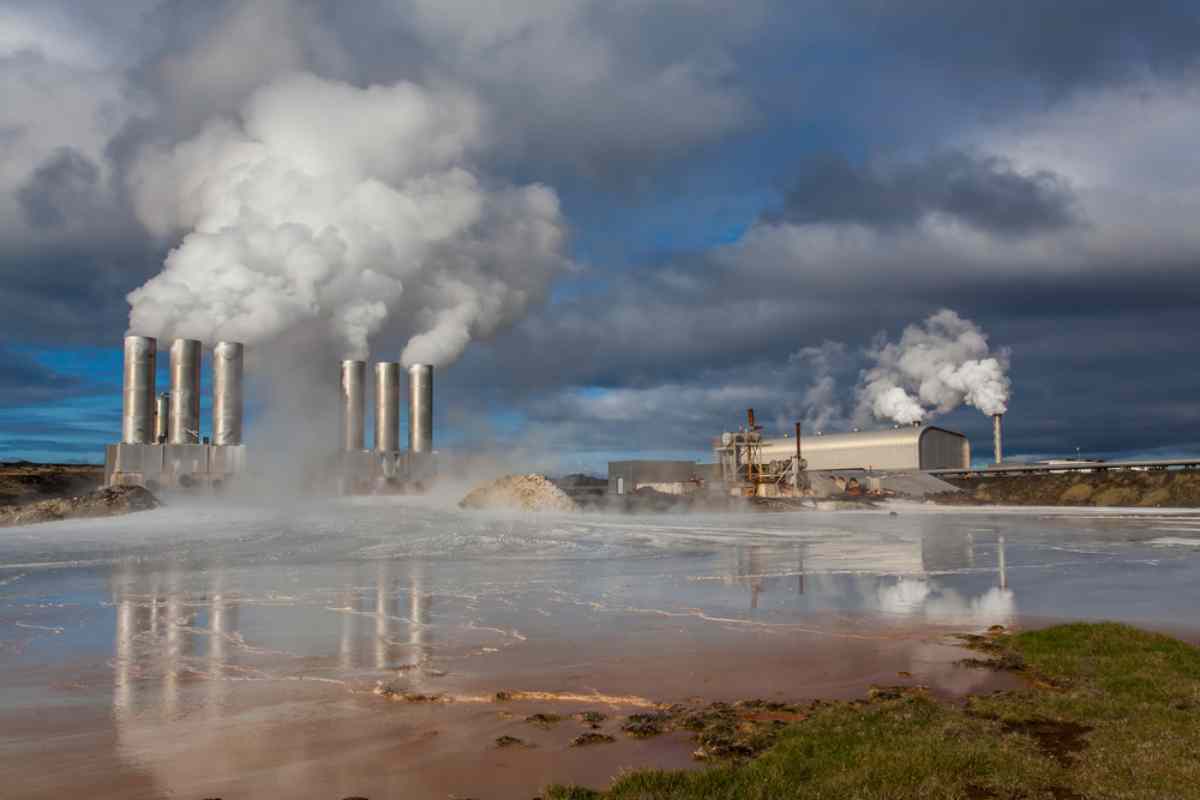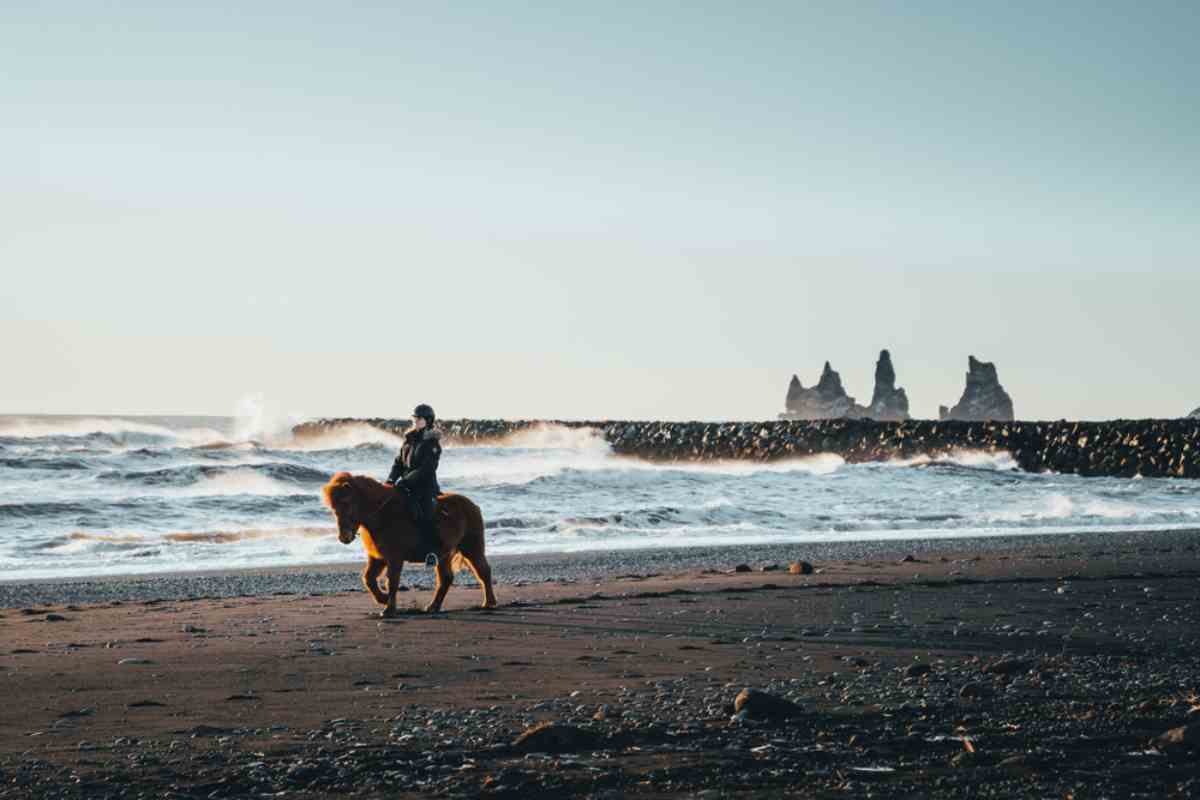It’s not often that someone can get into hot water, and it is a good thing. But here at the Hveravellir Nature Reserve in Iceland, it’s an absolutely extraordinary experience that deserves a spot on any trip itinerary when visiting the island.
This article takes a deep dive into the Land of Fire and Ice’s fiery side with its unique geothermal experiences and reveals why Hveravellir stands out as a local hot spot (pun intended) that’s not to be missed.
Hveravellir: An Introduction
Hveravellir is a nature reserve here in Iceland, established in 1965. It is located in the Highlands and sits between two of our famous glaciers: Hofsjökull and Langjökull. The Highlands in Iceland are known for its beauty, so it’s no surprise that many visitors flock to the nature reserve each year to take in the incredible views. But it’s not just the breathtaking landscapes drawing the crowds to Hveravellir. Most come to see and experience the following:
The Hiking Trails
You will find numerous hiking trails in Hveravellir Nature Reserve, and you don’t need to be a hiking pro to take these on. The different trails are color-coded as green, orange, or red.
But, unlike many other trails in Iceland where these colors hint at the difficulty level, the Hveravellir trails are mostly ranked in distance (with green being the shortest and red the longest). Since all trails are relatively easy, anyone with some range of fitness will be able to complete them. The following are the three main hiking trails in Hveravellir:

Evindarrett Circle Trail (Green)
- Distance: 3 km (1.8 miles)
- Duration: 30 to 50 minutes, depending on your pace
- Elevation: Practically 0
Highlights of the Trail: Lava fields, moss-covered heaths, Eyvindur’s Cave, and there’s also a chance you’ll spot our elusive island predator, the Arctic Fox.
Hveravellir to Pjofadalir Out-and-Back Trail (Orange)
- Distance: 21 km (13 miles)
- Duration: 5 to 6 hours, depending on your pace
- Elevation: 150 meters (500 feet)
Highlights of the Trail: Lava fields, beautiful valleys filled with flowers and berries (if you get your season right), and incredible views of Mt. Redhead as well as the glaciers if the weather allows.
Hveravellir to Strytur Out-and-Back Trail (Red)
- Distance: 12 km (7.5 miles)
- Duration: 3 to 5 hours, depending on your pace
- Elevation: 240 meters (800 feet)
Highlights of the Trail: Lava fields, geothermal activity, Strutur Crater, and when the weather permits, you’ll also be treated to some incredible views of the glaciers.

The Hot Springs
Here, we have to make it very clear that even though you’ll find various hot springs in Hveravellir, the ONLY one suitable for bathing is found nearest to the parking lot next to the restaurant, and, technically, it’s a geothermal pool. This Hveravellir hot spring may look very natural with its rocky aesthetic as it sits next to the stream, but it has a pipe that merely pumps in natural hot spring water from the geothermal river.
This water is piping hot (pun intended), so don’t go poking around there. The almost boiling hot water is made pool-day friendly by mixing it with cold water from another inlet pipe. The combination gets it to enjoyable temperatures that range between 18.6 and 39.3 degrees Celsius. The Hveravellir Blue Geothermal Pool has capacity for up to 20 people.
The other hot springs found in the area that are NOT suitable for bathing include Oskurholl (known for its whistling and roaring) and Eyvindarhver (known for its spouting). Then there are a few others that are not quite as active but still make for an impressive sight. These are:
- Grænihver (roughly translates to “The Green Hot Spring”)
- Blaihver (roughly translates to “The Blue Hot Spring”)
- Fagrihver (roughly translates to “The Lovely Hot Spring”)
- Gamli Fahrihver

The Geothermal Area
While the hot springs are technically a “symptom” of the geothermal activity in the area, we purposefully exclude them from our discussion of the geothermal area as an other-worldly landscape. Hveravellir is part of the Oddnýjarhnjúkur-Langjökull volcanic system, contributing to its geothermal activity. The landscape is almost completely barren since the combination of the heat, gasses, and other compounds found in the soil makes it impossible for anything to grow there.
If you add the bubbling mud pits and steam vents, with a crazy array of almost displaced colors of yellow, green, blue, and red (due to the minerals) on top of this barrenness, you can understand why the geothermal areas at Hveravellir might leave you thinking that you’ve just landed on Mars.
The History of Hveravellir
It is assumed that Hveravellir must’ve played a part in the lives of locals since the year 900. This assumption is based on the Kjalvegur Road that runs through the area and is mentioned in the Viking Sagas. Kjalvegur was the nearest thing to a highway back then, with many using it to travel and transport goods between the south and the north of the island.
That’s why it would’ve been nearly impossible for an area such as Hveravellir, with its bubbling, boiling, roaring, and sprouting, to have gone completely unnoticed with so much traffic passing through. The fact that it would’ve been impossible not to notice is actually confirmed by the first official written account by Bjarni Palsson and Eggert Olafsson. In their travel log of 1752, they describe how Oskurholshver Hot Spring made such incredible noise with its roaring that it could be heard from almost half a kilometer (a quarter of a mile) away!
Thus, the area was enjoyed and admired for hundreds of years before officially becoming a nature reserve in 1965. Like many geothermal areas in Iceland, Hveravellir was also used as part of our drive towards sustainable energy solutions, starting with greenhouse cultivation. In the 1970s, the hot spring water was used to provide Husavik with hot water. Since the 1990s, the water, steam, and heat from Hveravellir have also been used in generating electricity, supplying warm water, and providing heat to Husavik and its surroundings.

Myths and Legends Surrounding Hveravellir
Iceland is so intertwined with myths and legends that it can sometimes be difficult to discern historical facts from fiction. Therefore, it should come as no surprise that Hveravellir is also known for its myths and legends. Its most famous legend is the Bonnie and Clyde love story of Fjalla-Eyvindur (aka Eyvinder of the Mountains) and Halla.
To be clear, Fjalla-Eyvinder and Halla were undoubtedly real people, as the record books show. Where the facts become muddled by fiction is essentially up to you to decide. The story takes place in the 18th century and begins when Eyvindur went looking for work. The job hunt was not very successful, and at a certain point, he stole some bread and cheese out of complete desperation. As luck would have it, he was caught red-handed by a powerful sorceress disguised as a homeless lady.
She cursed him and told him that he was doomed to live his life as a fugitive: always on the run, yet never caught. After this, he fled to the Westfjords, where he eventually wound up at the farm of a widow called Halla. She lived there in the mountains alone with her son. The saying goes that opposites attract, and this couldn’t be more true for Eyvinder and Halla. Eyvinder was said to be a handsome and athletic man with a pleasant personality, while Halla was said to be unattractive with a cold and ruthless disposition.
Yet, these two fell in love and got married around 1741. From here on out, their lives resemble a Quintin Tarantino movie. Halla became a petty thief (and not so much out of desperation rather than perhaps her ruthless nature coming to the fore). A string of crimes ensued, especially after she joined forces with another thief called Arnes. After they racked up charges of theft and murder, Halla and Eyvinder were forced to flee.

Halla even wanted to burn down the farm with her children inside before leaving, but luckily, Eyvinder convinced her not to. Halla and Eyvinder ended up on the run for about 20 years. Eyvindarhellir Cave, still found in Hveravellir today, is said to have been one of their hideouts. Whenever Halla gave birth, she would kill the newborn and carry on with her criminal and fugitive life. And while it is said that Eyvinder was against these killings, he also didn’t really do anything to stop them.
One of Halla’s kids has actually managed to work themselves into the fabric of Icelandic culture. According to the legend, one of Halla’s kids, a little girl, somehow managed to reach 2 years of age with her murderous mother. Unfortunately for the little girl, authorities managed to track the fugitive couple down and were in hot pursuit (the closest they had gotten to being caught).
But, as you can imagine, a 2-year-old is not a fast sprinter, and when Halla had to choose between her child and her freedom, her child came second. Halla sang her to sleep (how this was less time-consuming than just continuing to flee is up for debate), before throwing her off a waterfall. This song has become a famous traditional lullaby here in Iceland, even though its lyrics are pretty dark (before you judge us Icelanders for this, check out the meaning of Ring Around a Rosie first).
Eventually, Halla and Eyvindur returned to Halla’s farm and were able to live out their last days there. In the true spirit of myths and legends, you will find different versions of the legend. Some tell a PG version of this story, while others tell a story that’s more in line with forbidden love and false accusations. People can’t even agree on how Eyvindur and Halla eventually died. But whichever version you believe, the legend has undoubtedly left its mark here in Hveravellir and in Iceland as a whole.
How to Get to Hveravellir in Iceland
Getting to Hveravellir is reserved for those who prefer taking the road less traveled (literally), and don’t shy away from a bit of adventure. The only way to reach Hveravellir is by driving there yourself (unless you’ve organized a customized private tour with one of the local tour operators or guides).
Because of its remote location in the Highlands and the fact that you’ll have to drive one of Iceland’s F-roads to reach Hveravellir, you will have to use a 4x4 vehicle for the trip. In fact, it’s illegal to drive the F-roads in a 2-wheel drive. Since Hveravellir sits roughly 200 kilometers from either Reykjavik or Akureyri, you can choose whether you’ll be driving up from the south or down from the north. Please find the directions for both below:
The Best Time to Visit Hveravellir
As an outdoor adventure that’s located in the Highlands, it’s obvious that the weather will play a big role in deciding when you want to visit. But this also overlaps with the fact that the F-road you’ll have to drive to get there will be closed for a certain part of the year. For the best weather (high temperatures and no extreme weather elements), you’ll have to plan your visit for the summer in Iceland (June to August).
With that in mind, the F35 road to Hveravellir is usually only open from late June to September. This gives you an additional benefit. Summer in Iceland is considered peak season, so there’s an inevitable increase in visitors and prices all across the island. Although the peak season crowds aren’t such a big issue in the more remote parts of the Highlands, we still recommend that you rather plan your trip for the September shoulder month if you want to avoid most of the peak season cons.
How Much Does Hveravellir Tickets Cost?
Technically, there are no tickets to visit Hveravellir. If you are visiting as part of a tour, you’ll obviously be paying the tour fee of the specific tour operator or guide. If you’re driving to Hveravellir yourself, the only cost you need to be aware of is the roughly 500 ISK (+/-$3.60/€3.40) to park in the parking lot at the Hveravellir Blue Geothermal Pool.
How Much Time Should Be Allocated to a Visit to Hveravellir?
How much time you should allocate in your trip itinerary to a visit to Hveravellir will depend on what you’re planning on doing there. If you just want to have a quick dip in the hot spring and check out some of the geothermal area highlights, allocating between 2 to 3 hours should be more than enough. But if you would like to take on the hiking trails at Hveravellir, we suggest you book out an entire day for your outing to the reserve.
Opening Hours at Hveravellir Nature Reserve
While Hveravellir Nature Reserve itself doesn’t have opening or closing times, some of its facilities and amenities do. The restaurant/bar is open from 07:00 to 22:00 every day, but breakfast is only served till 10:00, and after 21:00, you can only order sandwiches and light snacks.

Where to Stay Near Hveravellir
At Hveravellir Nature Reserve, you have the opportunity to stay on-site. There are so many different options for accommodation that at least one is bound to suit your personal preferences and your budget:
Backpackers Accommodation in the Old Hut
Cost: 9500 ISK ($68.50/€64.00) per person
The Old Hut consists of 3 dormitory rooms with single and double bunk beds. You must bring your own bedding (most prefer a sleeping bag), and ablution and kitchen facilities are shared.
*Linen and sheets can be rented at an additional 2200 ISK ($15.85/€14.85) per person
Private Room Accommodation in the New Hut
Cost: 34900 ISK ($251.40/€235.05) per person
These private rooms (with bedding, of course) can accommodate up to 3 people in a room, and the price includes breakfast for two. Please note that although the New Hut offers visitors shared ablution facilities, there are no kitchen facilities.
*Breakfast for the 3rd guest can be arranged for an additional 6400 ISK ($46.10/€43.10)
Campground
Cost: 2200 ISK ($15.85/€14.85) per person
Here, visitors will have the chance to pitch a tent or park their camper. There are shared ablution facilities but no kitchen facilities.
*Arrangements for breakfast can be made at an additional cost of 2400 ISK ($17.30/€16.20)
View this post on Instagram
Other Things to Do Near Hveravellir
If you would like to extend your trip itinerary beyond the borders of Hveravellir, then consider adding the following:
- Check out Gullfoss Waterfall
- Snowmobile across Langjökull
- Try tomato beer at Fridheimar Farm
- Go hiking in Kerlingarfjöll Mountain
- Check out Porsvatn Lake (the second-largest lake in Iceland)
- Visit Pjodveldisbærinn Stöng to see how the Vikings lived all those years ago
- Check out Grænalon Glacier Lagoon
View this post on Instagram
Time to Get Into Some Hot Water in the Highlands!
With all that Hveravellir and its surroundings have to offer, it’s time to head over to the Highlands. Please just remember that you will need a 4x4 vehicle to traverse this remote terrain and its F-roads when you’re renting a car in Iceland.
And we also recommend that you chat with your rental agent about your planned route and trip itinerary, to ensure that you have sufficient coverage on your rental insurance. You don’t want to end up in hot water with your insurance at Hveravellir (and here we’re definitely not referring to the good kind). So, use this article to prep and plan your trip and hopefully you’ll be having a relaxing soak in our beautiful Hveravellir Geothermal Pool very soon.


 By
By


